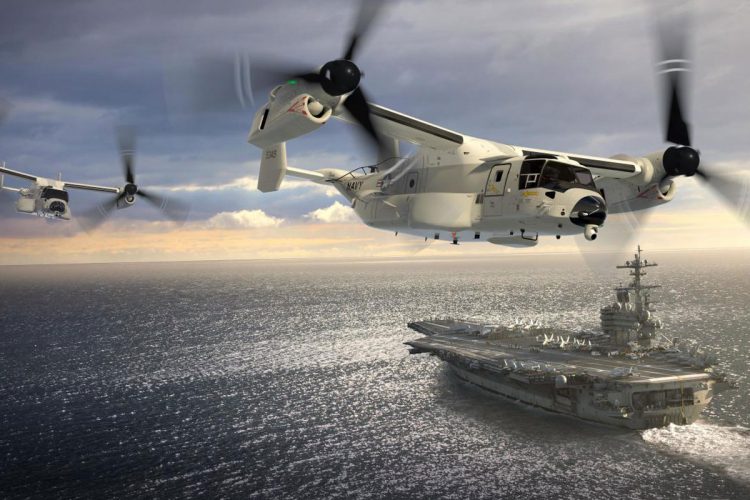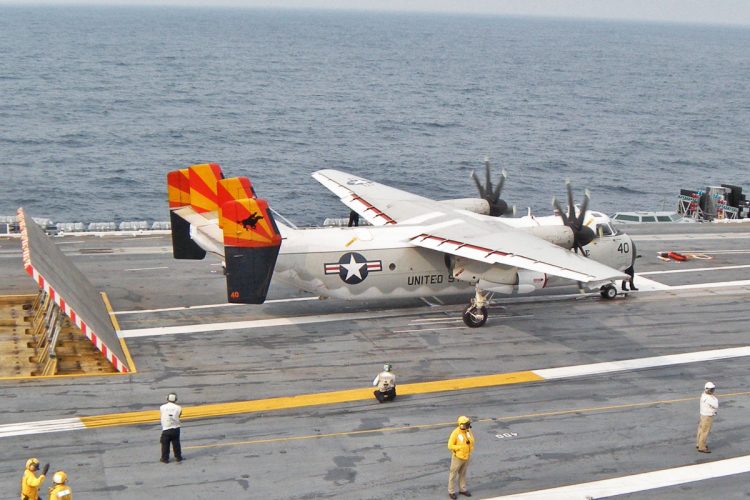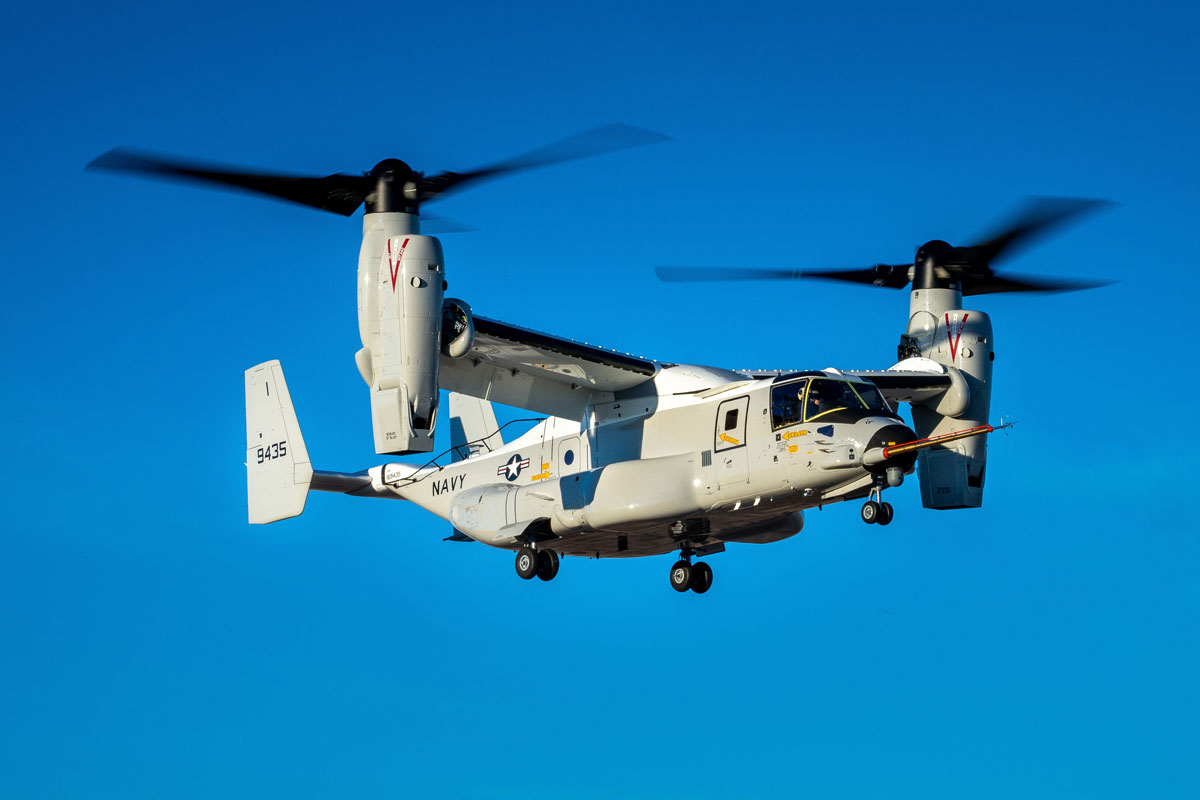One of the oldest aircraft used by the U.S. Navy on board its aircraft carriers will begin to be replaced soon. The C-2A Greyhound turboprop, manufactured by Northrop Grumman in the 1960s, will leave the scene by 2024 for the CMV-22B to enter service.
Despite the little-known acronym, it is a variant of transporting personnel and cargo on the V-22 Osprey tilt-rotor from Bell and Boeing. The first of 48 aircraft ordered was delivered by the two manufacturers on Monday in Amarillo, Texas.
“The CMV-22B brings expanded capabilities not only to the carrier onboard delivery mission, but to the high-end fight,” said U.S. Navy Captain Dewon Chaney, Commodore, Fleet Logistics Multi-Mission Wing. “We are anxious to get it to the fleet and show off its immense capabilities and agile flexibility.”
After flying for the first time in December, the CMV-22B will now be allocated at Naval Air Station North Island in San Diego and Naval Air Station Norfolk. To speed up training, members of the U.S. Navy trained with the U.S. Marine Corps, which have operated the Osprey since 2007.
In addition to being able to take off and land vertically, Osprey can also carry 6,000 pounds over a distance of 1,150 miles. According to Bell and Boeing, it is the only onboard aircraft capable of taking engine components from the F-35C fighter directly to the flight deck.

Hawkeye’s brother
The C-2 Greyhound was introduced in the U.S. Navy in 1966 to replace the C-1 Trader, a variant of the well-known anti-submarine aircraft S-2 Tracker. Designed by Grumman, the C-2 was an adaptation of the E-2 Hawkeye radar aircraft with a wider fuselage to accommodate 26 passengers or 10,000 pounds of cargo.
In 1984, the U.S. Navy placed a new order for the turboprop but with improvements in avionics and airframe and named C-2A (R). Grumman delivered 39 units by 1990 that replaced the original C-2A’s and expanded the aircraft’s fleet.
In the mid-2000s, 36 Greyhound aircraft underwent a life extension program, in addition to receiving a glass cockpit. The most visible modification, however, was the adoption of a set of propellers with eight blades. The reform made it possible for the C-2A (R) to fly until 2027, but the Navy decided to accelerate its replacement with Osprey over the next four years.


